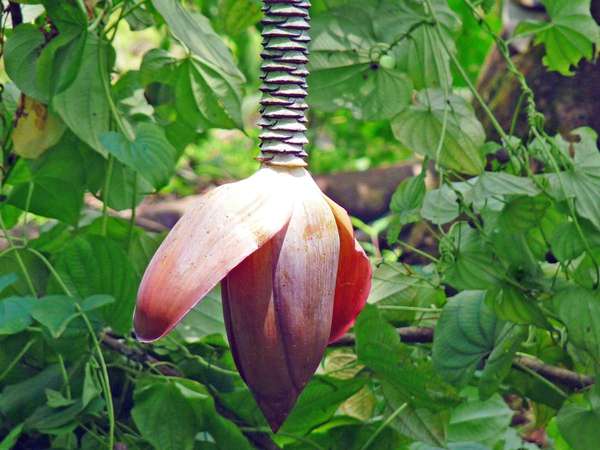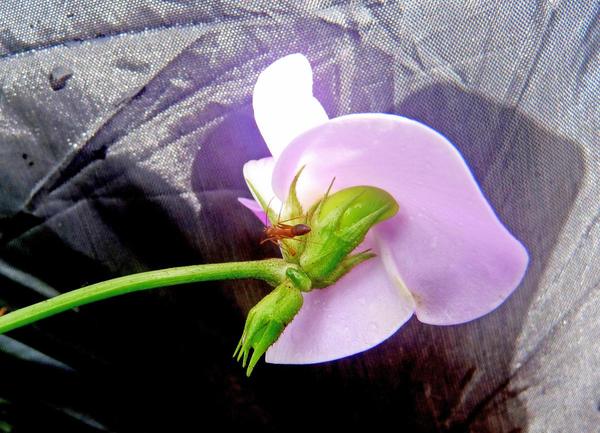We often tend to think of flowers as a thing of beauty, only to be admired. They look very pretty, whether cultivated carefully in the garden, or flowering in the wilderness…and often, they cast a beautiful scent around them, too. Right now, we have the Akasha Mallige trees in full bloom, a heady fragrance wafts through the air when we pass by them.
But there are flowers which are good to eat, too! One such flower is the bloom of the banana (plantain) tree.

Banana Flower. Pic: Deepa Mohan
The banana plant produces a single inflorescence, also known as the banana "heart". It is the actual rows of flowers between the "leaves" (called bracts) that are used in many cuisines. The flowers have hard stamens, which must be removed before using the rest of the flowers. Banana flowers are very rich in iron, and are reputed to be good for digestion.
I recently came across another flower, that tastes great!

Sweetpea. Pic: Deepamohan
I had always heard the name "Sweetpea" for this kind of flower, but had not thought about it…but then, I was given one of these flowers, whose beauty I admired. I was then asked to eat it! I tried it…and it was crunchy and sweet. The Sweetpea is an annual climbing plant, grown in many of our gardens. But we cannot gorge ourselves on the flower…the seeds can disagree with us, and be toxic if eaten in large quantities!
The Cauliflower, of course, is not a flower at all, only called so because of its shape, "flowering out" from its stem. An interesting fact is that the cauliflower we eat is a tropical cauliflower used in both China and India. It was developed in India during the 19th century from the now-abandoned Cornish type,and includes old varieties Early Patna and Early Benaras. The cauliflower "head" that is eaten is called the "curd".
Several other flowers in our gardens, such as the Rangoon Creeper or the Desert Rose, may not be fully edible, but they have nectar stored at the base, and if you pinch the end of the stem and put it in your mouth, you can actually taste the sweet nectar that the Sunbirds, bees and wasps come and harvest so regularly!
In our traditional cuisine, even the flowers of the Neem tree are used in cooking, as are the flowers of the Moringa (Drumstick) tree.
So, the next time you look at flowers, you can think of them in terms of taste as well as colour and aroma. And remember that the flowers provide a lot of food to many insects.⊕